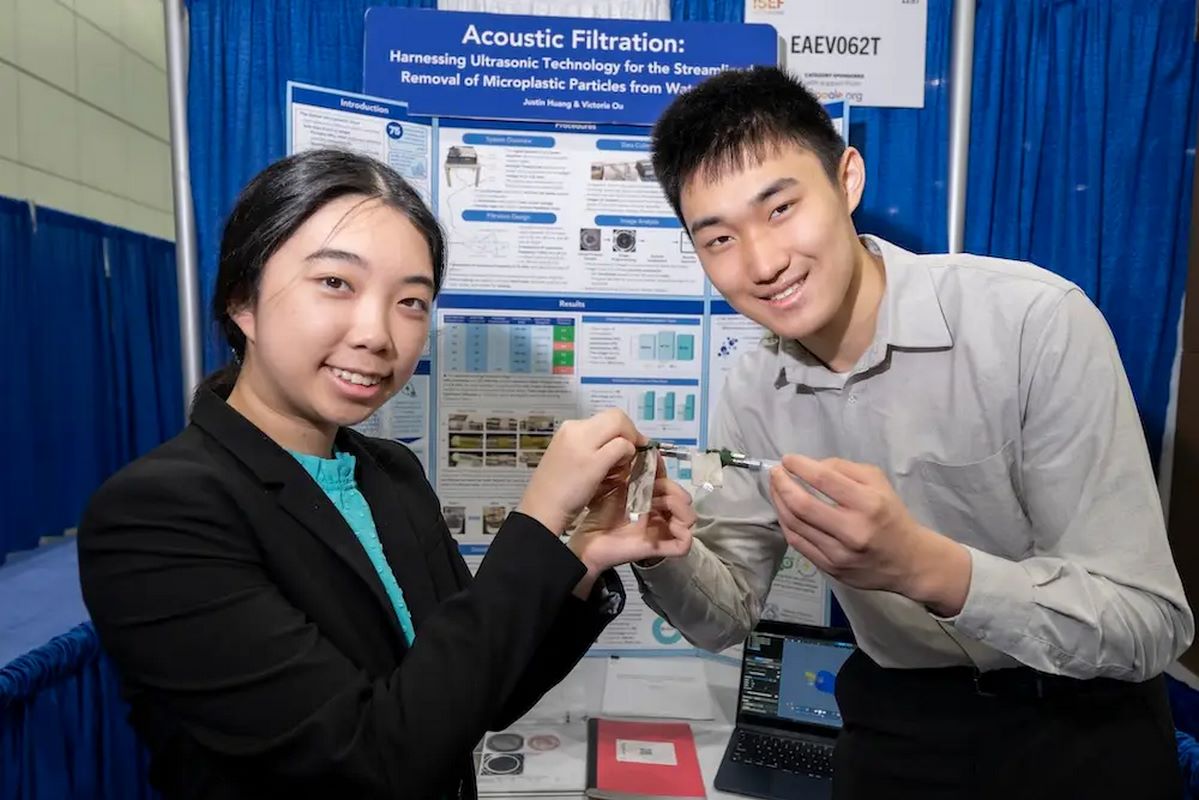Teens Create Ultrasound Waves Device to Remove Microplastics

Two high school students have developed a novel water filtration device that uses sound waves to remove microplastics from water. The device, which leverages high-frequency acoustic waves to trap up to 94% of microplastic particles in a single pass, has shown promise in lab tests. The students are now using prize money from a prestigious award to scale up their invention.
Microplastics are pervasive, found in the atmosphere, on Mount Everest, and in the deepest parts of the ocean. They have also been detected in various human organs. Their ability to effect human hormone production and health is a very real concern. Addressing this widespread contamination is challenging, but Justin Huang and Victoria Ou from Woodlands, Texas, may have found a solution.
Their device, no larger than a pen, uses ultrasonic sound waves to push microplastics away from the water’s exit point. This method improves on previous designs that used ultrasonic waves to address microplastics in wastewater and drinking water.
After receiving the Gordon E. Moore Award for Positive Outcomes for Future Generations and first place in Earth and Environmental Sciences at the Regeneron International Science and Engineering Fair (ISEF) in Los Angeles, Huang and Ou plan to refine their technology. They hope to enhance it with professional equipment and prepare it for large-scale production.
During their research, they discovered that wastewater treatment plants lack effective microplastic regulation due to cost and regulatory gaps. Huang and Ou envision their technology being used in wastewater treatment plants, industrial textile facilities, rural water sources, laundry machines, and even fish tanks.